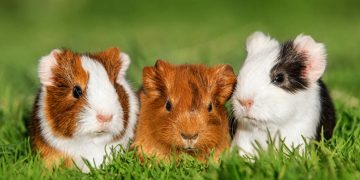Cultivating the Ebony Cavy: A Comprehensive Care Guide
The ebony guinea pig, a creature of both utility and charm, demands a meticulous approach to husbandry. This guide will illuminate the pathways to nurturing these animals, ensuring they flourish under your care.
The Essentials of Ebony Guinea Pig Husbandry
Raising ebony guinea pigs begins with the establishment of a clean and disinfected environment. Upon acquiring these animals, it is paramount to acclimatize them to their new surroundings and diet posthaste. A varied diet, inclusive of corn, rice bran, hay, corn leaves, tree leaves, vegetables, and fruit peels, is crucial for their well-being. The ideal temperature for their habitat should be maintained between 20 to 28°C. Additionally, timely vaccinations, starting a month post-arrival, are critical for their health.
Creating a Pristine Habitat
Cultivating a thriving ebony guinea pig population requires dedicated space and rigorous hygiene practices. Immediately introduce the new arrivals to a sanitized breeding ground. Acquainting them with their environment and diet should be done concurrently. The simplicity of their rearing belies the importance of a diverse diet for optimal nutrition. The maintenance of a temperature range between 20 to 28°C will promote rapid growth. A bi-daily cleaning routine for waste and a biweekly disinfection schedule for their watering and feeding troughs are imperative.
The Pinnacle of Cavy Care
The ebony guinea pig, a lustrous creature with a palette of black—black ears, eyes, and toes—is a valuable grass-eating animal with multiple uses: from gourmet delight to fur fashion. These creatures are characterized by a large head, short neck, rounded ears, and a tailless, compact body with short limbs. They are gentle, skittish, and known to vocalize with a high-pitched squeak. Their rapid growth, high reproduction rate, strong disease resistance, high survival rate, and adaptability make them ideal for small-scale breeding.

Feeding: A Balanced Diet for Vigorous Growth
Ebony guinea pigs are herbivores with a broad palate. They thrive on a mix of wild grasses, vegetables, tree leaves, plant stems, straw, and other plant-based foods. Feeding should occur twice daily, with a mix of fresh greens and a small amount of grains to foster growth. The diet should be a mix of concentrated and green feed, with fresh greens such as bamboo grass, ryegrass, corn leaves, sugarcane leaves, and vegetables forming the base.
Health and Reproduction: Ensuring a Healthy Lineage
Cleanliness is next to caviness. Whether in pens or cages, maintaining a hygienic environment is non-negotiable. Regular cleaning of feeding troughs and ensuring fresh food and water supply are essential to prevent contamination. When it comes to reproduction, early maturity is a hallmark of the ebony guinea pig. Females are ready to breed at one and a half months, with males showing sexual traits at around 70 days. A controlled breeding environment and gender segregation are crucial to prevent fighting and ensure successful mating.
Seasonal Management: Adapting to Change
Managing ebony guinea pigs requires seasonal adjustments. Spring calls for an increase in green feed and breeding activities. Summer necessitates vigilant heat management and sanitation to maintain a stable environment. Autumn is ideal for preparing breeding plans and stocking up on feed. Winter demands warmth and an adjustment in diet to compensate for a lack of fresh greens.
Disease Prevention: A Stitch in Time
Diligent care and strict management can prevent most diseases in ebony guinea pigs. Common ailments include bloat, often due to moldy feed or contaminated water, and wasting disease caused by nutritional deficiencies. Preventative measures include a clean environment, balanced nutrition, and immediate treatment upon the first signs of illness.























































